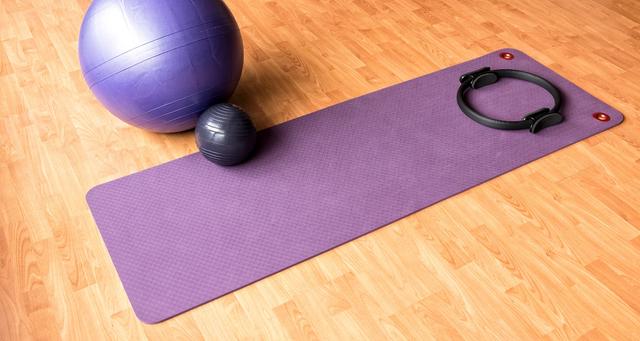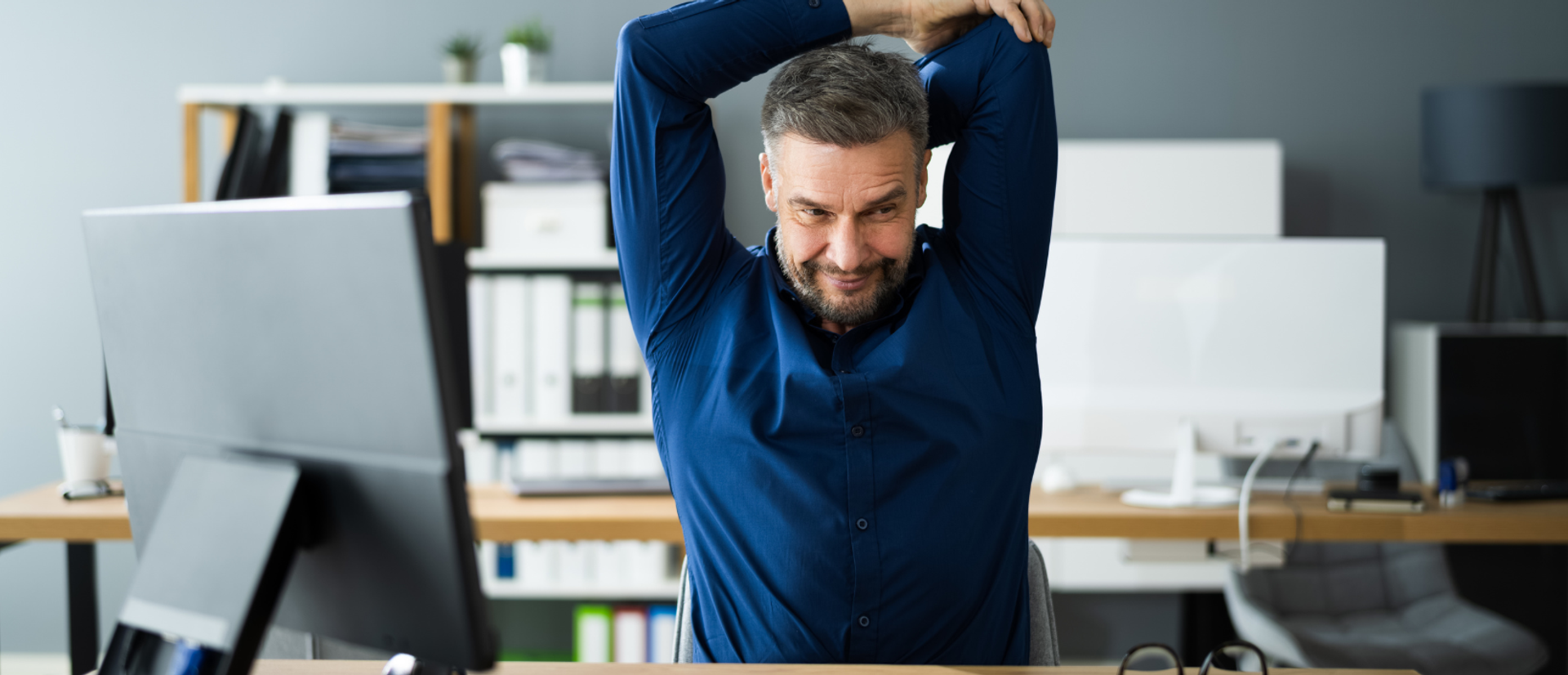
How to Stay Active When Working a Desk Job
Since desk jobs have become the norm, people have struggled with their fitness and mobility. If you’re tired of feeling fatigued and out of shape due to a sedentary lifestyle, this guide will help you get back on track.
Spending all day seated at a desk is now the norm, not the exception.
Millions of people work in office environments where long hours at a computer are typical.
While this routine may feel productive, it often comes at a cost. Physical activity becomes limited, posture begins to decline, and energy levels tend to drop by the afternoon. Soon enough, you find yourself out of shape, chronically fatigued, and relying on sugary treats or caffeinated beverages to keep you awake.
But what can be done? You can’t just quit your job or switch professions in a day, and staying active with a desk job is impossible, right?
Not exactly.
You’ll be glad to know that staying active during the workday does not require a major lifestyle overhaul. With a few minor changes, you can introduce more movement into your routine and improve how your body feels, functions, and performs.
In this blog, we will explore the impact of sedentary work, how to incorporate movement into your schedule, and how to build an easy desk workout routine that keeps you energized, alert, and pain-free.
If you’re ready to stay fit and healthy without giving up your 9-5, this article is for you!
Why Sedentary Work Affects Your Health and Energy
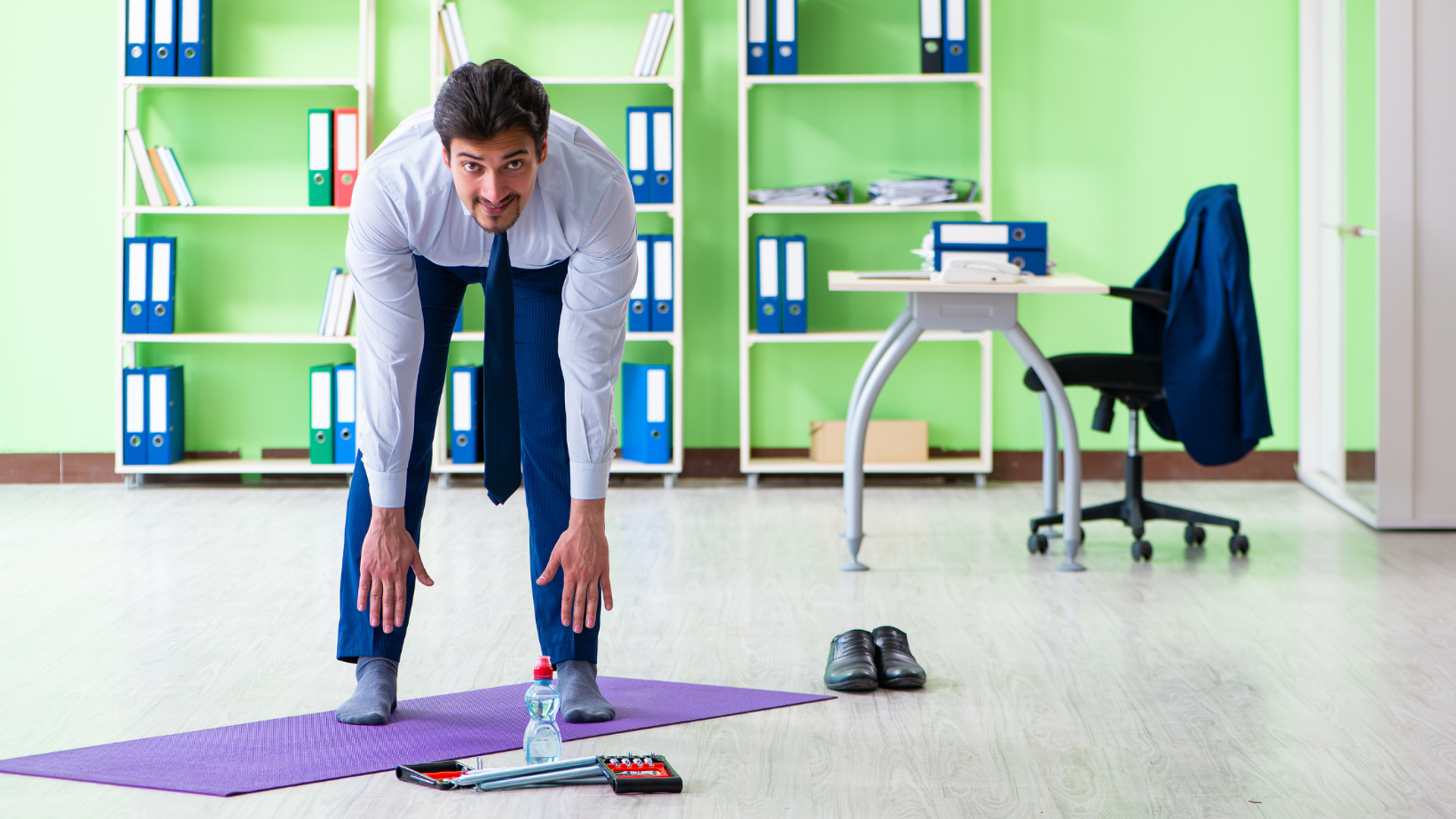
Before exploring ways of staying active with a desk job, it’s important to know why change is necessary in the first place. It all comes down to the negative effects of a sedentary lifestyle, which are often minimized or ignored.
While working a desk job may seem harmless on the surface, the effects of sitting for long periods are far-reaching. From physical discomfort to reduced cognitive performance, the body is not built to stay still all day. Understanding how sedentary work impacts your health is the first step in making meaningful improvements.
Reduced Circulation and Muscle Stiffness
When you sit for long stretches, blood flow slows and your muscles start to stiffen. This effect is especially noticeable in areas like the hips, hamstrings, shoulders, and lower back. The more time you spend in the same position, the more tension builds up in those muscles.
Over time, this can lead to discomfort, reduced mobility, and a higher risk of strains or injuries.
This lack of circulation also affects your joints. Without regular movement, joints do not receive the nutrients and lubrication they need to stay healthy. While the benefits of walking are often underrated, even a quick stroll or stretch can bring noticeable relief and help reset your posture throughout the day.
Declining Posture and Core Strength
As the hours pass, your posture tends to shift. Instead of sitting tall, you begin to slouch.
Your shoulders slump forward, your spine curves, and your core muscles disengage.
While this position might feel comfortable in the moment, it places stress on the neck, upper back, and lower spine. Over time, this can lead to chronic pain, muscular imbalances, and decreased functional strength.
Additionally, the benefits of a strong core should not be underestimated. A strong core improves balance and stability, while a weakened one destroys them. When your core is not engaged, your body has to work harder to perform everyday movements, which can lead to fatigue and even injury.
Keeping your core active and upright during the day is an essential part of long-term physical health.
Lower Energy and Focus Throughout the Day
Sedentary habits affect your brain as well as your muscles. Long periods of stillness can lead to reduced oxygen flow, making you feel sluggish, mentally foggy, and less engaged. When you are not moving, your body is not producing the hormones and neurotransmitters that support energy, focus, and mood regulation.
You might notice that your energy dips mid-afternoon or that it becomes harder to stay focused on simple tasks. These symptoms are often linked to inactivity, not just a heavy workload.
The good news is that movement, even in small doses, can help you reset, refocus, and feel better almost immediately.
How to Incorporate More Movement Into Your Workday
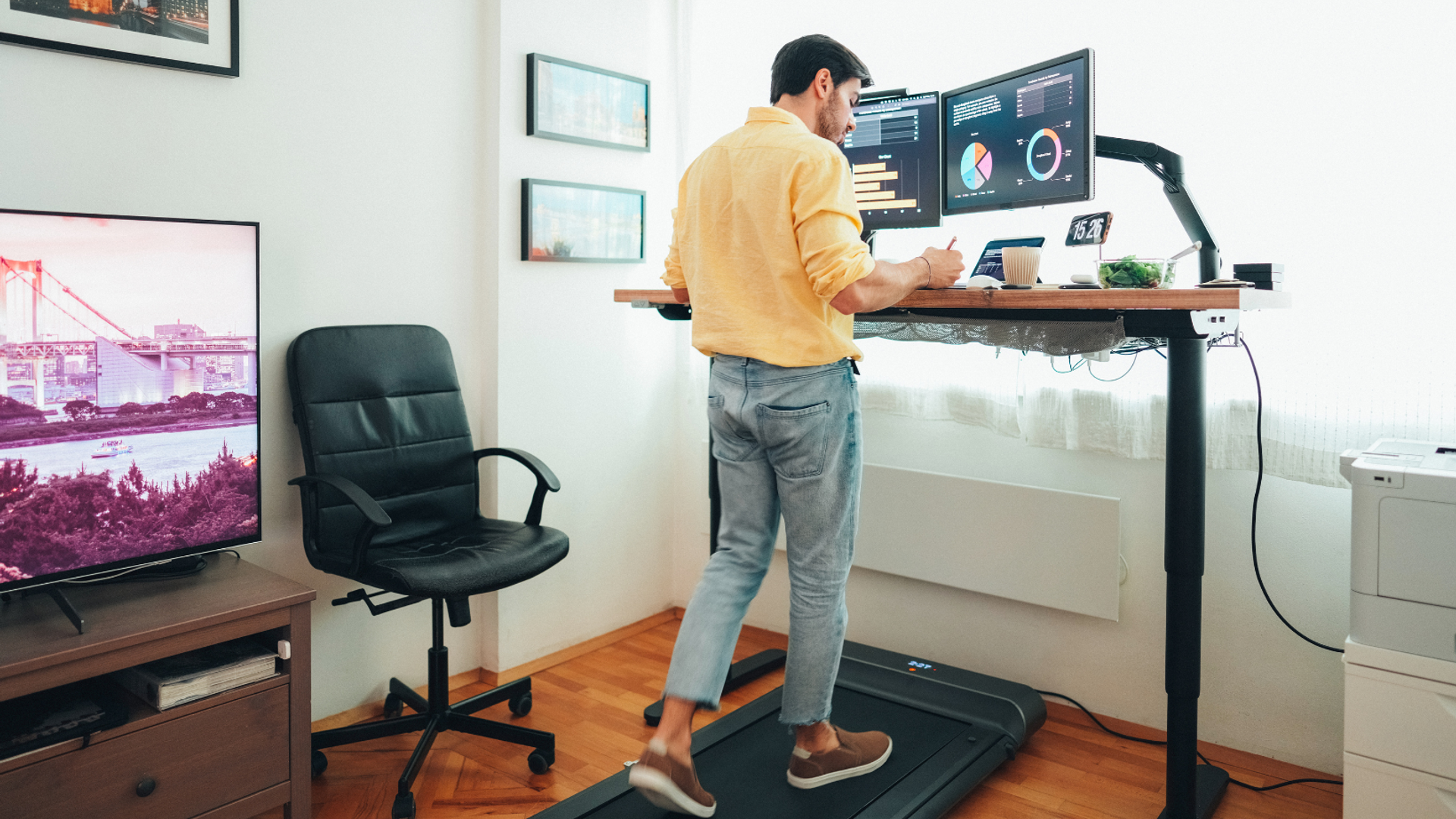
Staying active during the workday does not mean you need to squeeze in a full gym session. Simple, consistent actions throughout the day can have a powerful impact. The key is to break up long stretches of sitting and create routines that help your body stay mobile and engaged.
Break Up Sitting Time With Standing or Walking
One of the easiest and most effective changes you can make is to stop sitting for hours at a time. Aim to stand up every 30 to 60 minutes, even if it is just for a few minutes. Use that time to walk around your office, stretch your legs, or refill your water bottle. These short breaks help increase circulation, improve posture, and give your muscles a chance to reset.
If possible, consider using a sit-stand desk or taking short walking meetings. Even a five-minute stroll down the hallway or outside can help reduce fatigue and improve mental clarity. Over time, these small moments of movement become habits that help build strength and endurance for lifelong health.
Use Mobility Drills at Your Desk
You do not have to leave your workspace to move your body. Seated stretches and mobility drills can make a big difference in how you feel throughout the day. Try shoulder rolls, neck circles, or gentle spinal twists to release tension in your upper body. Leg extensions, ankle rolls, and calf raises are great options for lower-body circulation.
These exercises require little to no space and can be done in between meetings or while you wait for an email. The goal is not to break a sweat but to keep your joints moving and your muscles from stiffening up.
Incorporate Movement Into Existing Habits
Movement is easier to maintain when it becomes part of your existing schedule. Look for ways to pair physical activity with things you are already doing.
For example, take phone calls while walking, perform light stretches during breaks, or use your lunch break to do a quick desk workout. These small shifts do not take extra time; they simply make better use of the time you already have.
You can also build movement into your commute. If you take public transportation, consider getting off one stop early and walking the rest of the way. If you drive, try parking farther from the entrance. While these changes may seem minor initially, they help you add hundreds of extra steps to your day without requiring a significant effort.
What Makes an Effective Office Desk Workout?
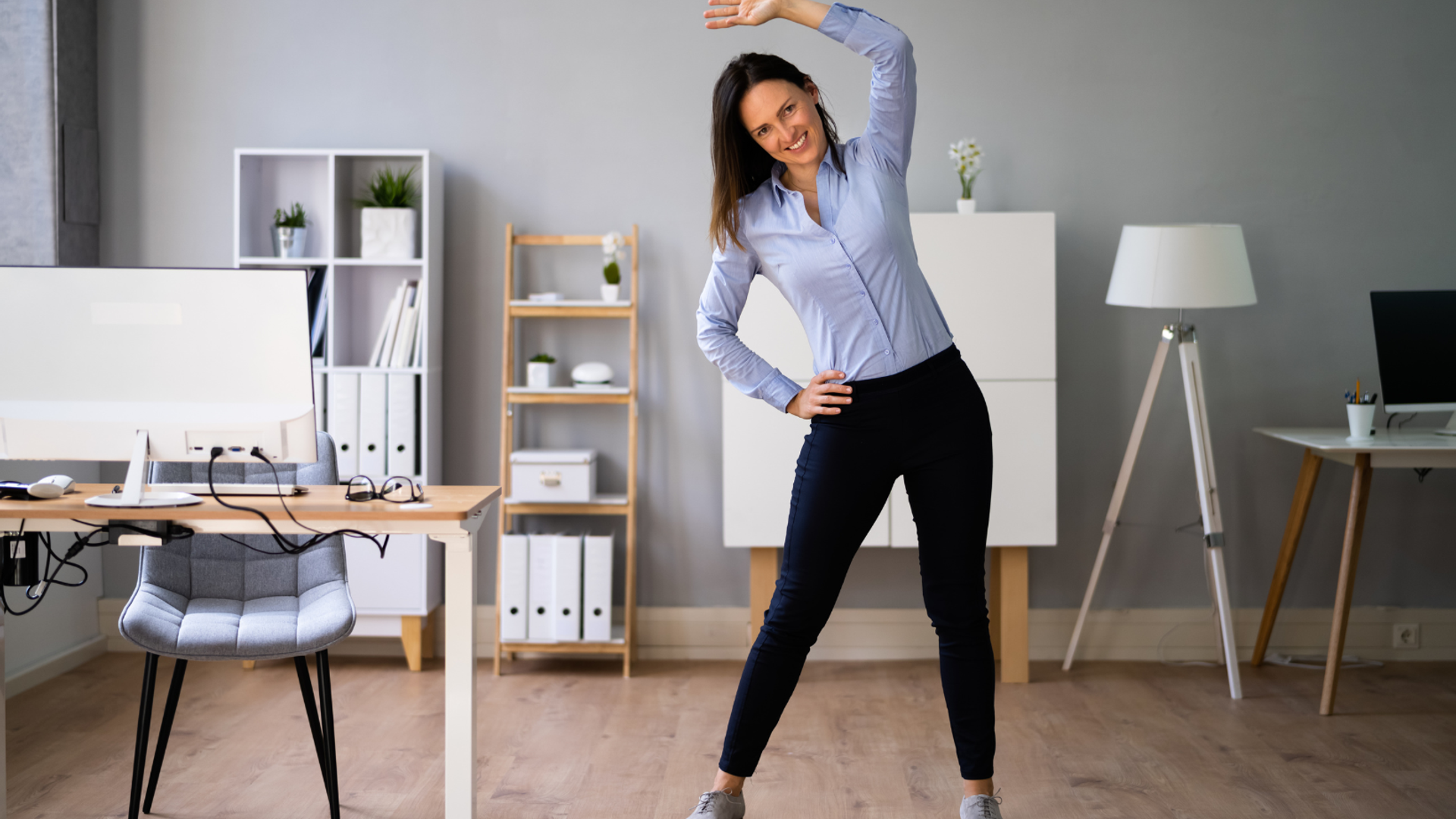
A well-designed office desk workout can keep your body active, improve circulation, and reduce discomfort, all without taking much time. These routines are especially helpful for people who want to move more but do not have access to a gym or large workout space during the day.
Focus on Posture and Mobility First
The best desk workouts begin with movements that target the areas most affected by sitting. Focus on opening the chest, mobilizing the spine, activating the core, and stretching the hips. These exercises counteract the rounded posture and tight muscles that develop during long hours at your desk.
Start with exercises like wall angels, seated cat-cow stretches, or standing hip openers. These help restore balance to your body and create a strong foundation for more dynamic movements. Even five minutes of mobility can reduce stiffness and help you feel more energized.
Use Bodyweight and Minimal Equipment
One of the biggest advantages of a desk workout is that you do not need fancy equipment. If you work from home, bodyweight exercises such as chair squats, desk push-ups, and seated leg lifts are highly effective and easy to perform in a small space.
If you want to add variety, consider using resistance bands, a light set of dumbbells, or even a water bottle as added resistance.
The good news is that these beginner-friendly workouts are accessible for most fitness levels. You can modify them to match your strength, flexibility, or time constraints, and still get noticeable results.
Keep the Routine Short and Frequent
Instead of aiming for one long session, try breaking your routine into two or three five-minute segments throughout the day. This allocation makes it easier to stay consistent and helps maintain your energy over time.
Morning routines can help you wake up, midday movement can prevent the afternoon slump, and a short session before you leave work can reset your body before heading home.
The frequency of your desk workout matters just as much as the intensity. Regular movement keeps your muscles engaged, your posture supported, and your mind more focused on your work.
Long-Term Benefits of Staying Active at Your Desk
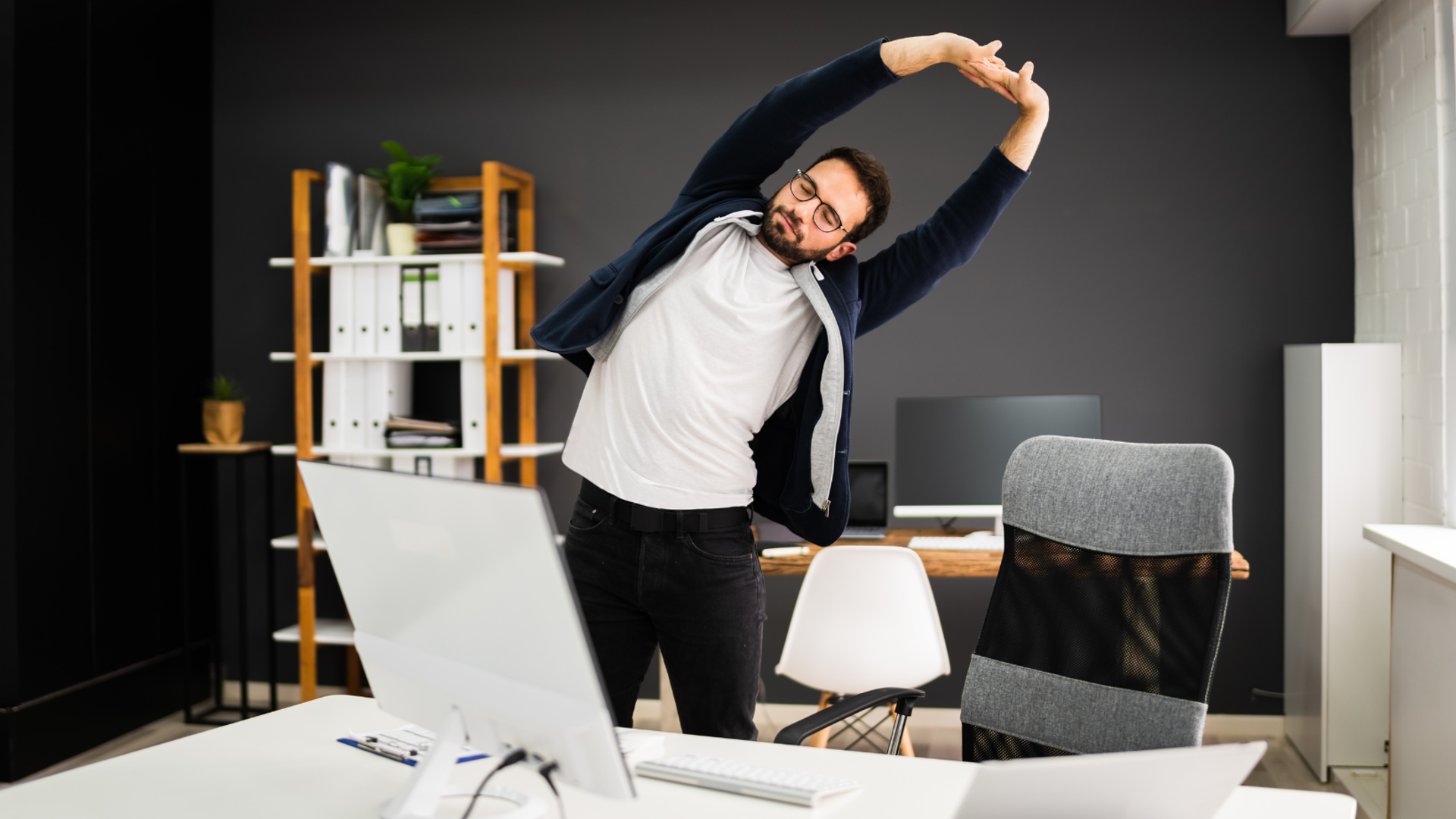
Staying active during the workday does more than improve posture or reduce tension. It creates a ripple effect that benefits physical health, mental clarity, and overall productivity, both now and in the long run.
Improved Focus and Productivity
Movement boosts circulation and oxygen delivery to the brain, which directly affects focus, concentration, and memory. Moving regularly makes you more likely to stay sharp, engaged, and alert throughout the day. Tasks become easier to complete, and mental fatigue becomes easier to manage.
Even short bursts of activity can improve creativity and help you think more clearly. When you feel physically energized, it is easier to approach your work with confidence and clarity.
Improved Physical Comfort and Fewer Aches
The more time you spend sitting without moving, the more discomfort you tend to experience. Back pain, shoulder tension, tight hips, and sore wrists are all common complaints among desk workers.
Incorporating regular movement and stretching helps reduce these symptoms and makes your day physically easier to manage.
Consistent movement also supports spinal alignment, joint health, and muscle engagement, all of which contribute to feeling stronger, more mobile, and less stiff as the day progresses.
Stronger Habits That Support Wellness
Creating an active workday sets the tone for other healthy habits.
When you start moving more during the day, you may find it easier to commit to workouts after work, rely on fitness nutrition to choose healthier meals, or prioritize rest and recovery.
These small wins build momentum and make long-term change feel more realistic and sustainable.
The more consistent you are with movement, the more it becomes part of your lifestyle. You no longer need to “make time” for exercise since it becomes something you naturally integrate into your day.
Final Thoughts
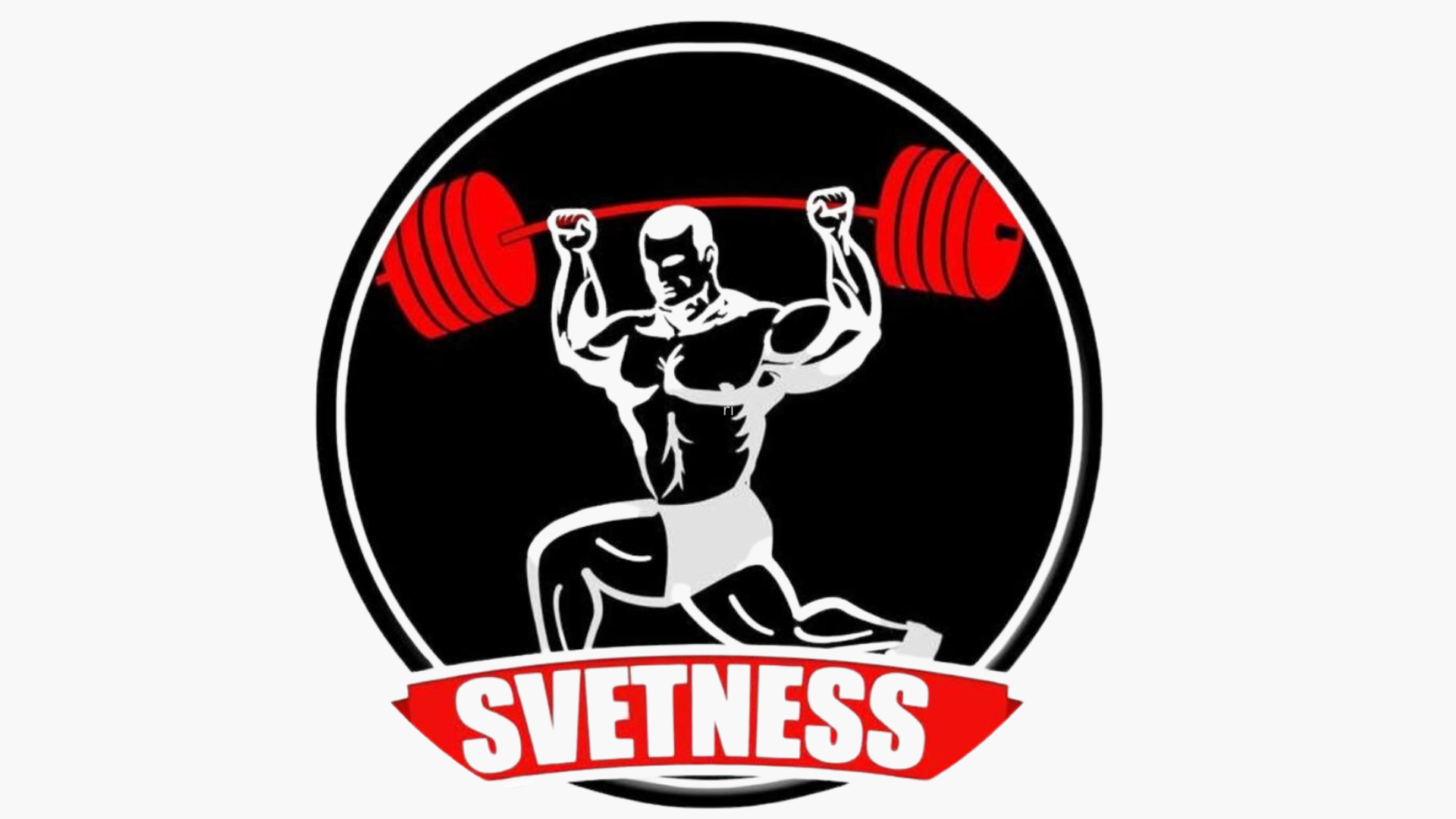
If you spend your workday behind a desk, adding movement to your routine is not just helpful but necessary. Regular activity helps offset the effects of sitting, supports your posture, boosts energy, and improves how you feel in both your body and mind.
You do not need to overhaul your schedule or carve out hours at the gym. Small, intentional actions throughout the day can completely transform how you move, think, and perform.
Whether it is a quick walk, a series of stretches, or a short office desk workout, every movement matters. By making these practices part of your daily routine, you invest in your long-term health, comfort, and productivity.
If you work from home and find in-home personal training ideal for your breaks, consider partnering with our certified Svetness trainers for noticeable results in less time.
Frequently Asked Questions
How often should I do an office desk workout during the day?
Aim to perform short movement sessions every one to two hours during your workday. Even five minutes of stretching or bodyweight exercises can help reduce stiffness and improve circulation.
What are the best stretches for people who sit all day?
Focus on chest openers, spinal twists, hip flexor stretches, and neck rolls. These movements target tight areas from prolonged sitting and help restore mobility.
Can short movement breaks really improve productivity?
Yes. Even brief activity increases blood flow and oxygen to the brain, which improves mental clarity, focus, and task efficiency.
What if I work in a small space or shared office?
You can still stay active with discreet stretches, seated exercises, and short walks around the building. Many desk workouts are designed to be subtle, quiet, and equipment-free.
Start your Svetness journey today
Get a free consultation and see how our trainers can transform your wellness journey.

